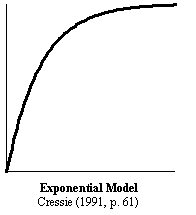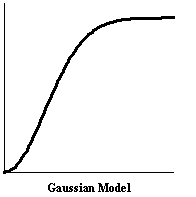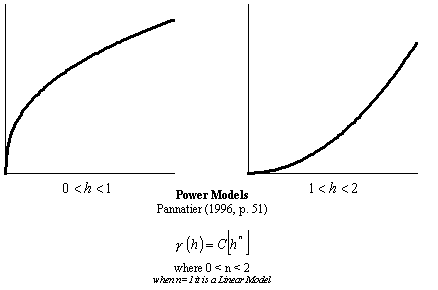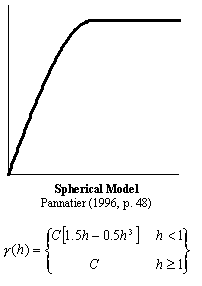Principios de un MDT
Un modelo digital del terreno MDT es, por definición, un conjunto de datos que permiten la interpolación de un punto arbitrario del terreno con una precisión preestablecida. En este sentido, el MDT se diferencia bastante de las líneas de contorno o curvas de nivel de un mapa o modelo analógico, ya que las curvas de nivel otorgan información solamente sobre la altitud y su imagen debe dar una idea sobre la morfología del terreno (terreno plano poco ondulado, líneas planas y atenuadas; terreno áspero, líneas muy onduladas, etc.). Las líneas curvas de nivel representan además leves y pequeñas características geomorfológicas mediante su forma típica y el efecto familia. Esto a veces requiere que se exageren ciertas formas del terreno. Como consecuencia las líneas de nivel se utilizan básicamente para la visualización del terreno, mientras que el MDT da información sobre la elevación y el andar de las cotas en cada punto del terreno. Las curvas de nivel obtenidas mediante el dataset de un MDT no muestran en modo específico la morfología del terreno, análogamente a las de los perfiles diseñados por un topógrafo.
Datos básicos del MDT y principios de interpolación. Triangulación de Delaunay
Los datos necesarios para un MDT son puntos acotados (mass points) y líneas características como break lines, líneas estructurales del terreno, talweg, delimitación contornos de zonas muertas que no se pueden cartografiar (dead areas), entre otros. En general por interpolación la cota de un punto se calcula mediante la interpolación lineal entre puntos contiguos. Una técnica bastante común consiste en llevar a cabo una triangulación entre los puntos de apoyo registrados, lo cual significa que se define una serie de triángulos cuyos vértices son los puntos acotados. Generalmente se utiliza la triangulación de Delaunay; en este caso se elige el círculo más pequeño que contenga solo 3 puntos contiguos. Dentro este triángulo se interpola utilizando generalmente técnicas bilaterales bilineales o, algunas veces, técnicas bicúbicas. La triangulación no puede pasar sobre o atravesar una línea característica. Las líneas poligonales partidas de las líneas características se utilizan siempre como líneas del triángulo hechas coincidir con los lados de los triángulos.
Triangulaciones vinculadas
Los puntos acotados o una retícula representarán el terreno natural, sin embargo no reproducirán de manera completa otras características, tales como bordes y discontinuidades del terreno, ubicación de diques, etc., por lo que es aconsejable utilizar break lines o líneas de inflexión o rotura para aquellas características del terreno que rompen la continuidad de la superficie excediendo la precisión de cota del MDT entre puntos contiguos de la red.
Se deben indicar de manera especial las zonas de menor precisión, cubiertas por vegetación u otros obstáculos, así como aquellas que no pueden ser medidas. En los MDT con precisión inferior al metro, es oportuno delimitar también las zonas que no se deberán contemplar debido a que no pertenecen al terreno (casas, lagos, etc.).
Son llamadas Triangulaciones vinculadas todas las triangulaciones que prevén elementos estructurales para los cuales los triángulos que se formarán seguirán el criterio impuesto por el vínculo.
Delaunay Triangulation
We define a triangulation of a finite set of points V in the Euclidean plane to be a maximal planar straight line graph having V as the set of vertices and such that no two edges of the graph properly intersect (i.e. only at their endpoints).
Terrain 5 model terrain using either a regular grid structure or a Triangle Irregular Network (TIN). The advantages of using a TIN are: triangles are simple geometric objects which can be easily manipulated and rendered; TINs are not bound by the regularity constraints of a regular grid and so can approximate any surface at any desired tolerance with a minimal number of polygons; multiple TINs of a single area of terrain can be organised into a hierarchy with respect to their resolution so that they can provide generalizations or details as required by different applications. Of prime importance is that the triangulation is a good approximation to the real-world surface. A second requirement of the triangulation algorithm is that it should produce triangles which are as close to being equiangular as possible. This condition is essential for numerical interpolation since it ensures that the maximum distance from any interior point to a vertex of its enclosing triangle is reduced and it also minimises the aliasing which can arise when long, thin triangles are displayed. Thirdly, we need an algorithm which will produce a unique triangulation of a given set of points so that we generate reproducible and consistent surfaces. A Delaunay Triangulation provides all of the these benefits.
TINs main drawback is that no overhanging features can be represented, but this is usually a minimal concern with terrain. For representing overhanging features, a full blown 3D triangulation must be used.
Terrain 5 uses Delaunay triangulation for immediate use, or as a basis for for mesh smoothing, refining or resampling. Other kinds of mesh can be derived too, like grid meshes or bezier surfaces.
Voronoi Diagrams
Informalmente, la teselación de Voronoi (también llamada Dirichlet o Theissen tesselation), representa las regiones de un plano que son más cercanas a un punto en particular que a otros.
Para borrar los datos de voronoi producidos por el programa ir a la ventana "Administrador MDT", y en el panel "Elementos del MDT" presionar "papelera" al lado de "Voronoi"
Delaunay triangulation and Tesselation of space
Voronoi Diagrams are closely related to Delaunay Triangulations.
Delaunay (1934) proved that when the dual graph of a Voronoi diagram is drawn with straight lines, it produces a planar triangulation of the Voronoi points P (if no four sites are cocircular). This arrangement is called the Delaunay triangulation of the points.
A Delaunay triangulation is desirable for approximation applications because of its general property that most of its triangles are nearly equiangular and also because it generates a unique triangulation for a given set of points.
The properties of a Voronoi Diagram V(P), of a set of points P={P1,P2,...,Pn}, and its relationship to its corresponding Delaunay Triangulation, are as follows (after O'Rourke 1994):
•each Voronoi region V is convex
•if v is a Voronoi vertex at the junction of regions R(P1), R(P2) and R(P3) then v is the centre of the circle C(v) determined by P1 , P2 and P3
•C(v) is the circumcircle for the Delaunay triangle corresponding to v
•the interior of a circumcircle C(v) contains no points
•if Pj is a nearest neighbour to Pi , then P(i,j) is an edge of V(P)
•there is some circle through Pi and Pj which contains no other points, then (Pi,Pj) is an edge of V(P)
GRIDS
A grid G is a regurlaly spaced distribution of points Pg() in the Euclidian plane, each point being affected with a height data. A simple mesh can be derived from it as a maximal 3D straight line graph having with Pg() as vertices. Each point Pg() isn't coincident with any original point of P(), but is resulting of a local interpolation of P().
The process of estimating values at evenly spaced grid nodes based on the original irregularly spaced data is called " interpolation". There is no perfect solution to estimate values at each grid node and many techniques are in use. The validity of each depends on the type of data being interpolated and its distribution pattern. Triangulation is most commonly applied to elevation data since it is a technique that uses the slope between data points to estimate new grid values.
Grids are simple structures that can be easyly manipulated, they are, in essence, much like rasters. Unlike TINs, grids are bound by the regularity constraints and so can't approximate any surface at any desired tolerance.
Grid main drawback is it's inhability to represent overhanging features, or any feature topologically shorter than the cell size of the grid. Minimizing the cell size improves terrain representation, but induce an important growth in cells count, hence maximizing rendering time and storage space.
Anisotropic meshing
As in Ruppert's algorithm, the program eliminates "encroached" segments by inserting vertices at their midpoint. The only difference is that encroachment is verified after applying the transformation T assigned to the midpoint of the segment.
Then, the program locks every segment, determines what is the interior region, and starts attacking internal triangles of low quality by refinement (i.e. by inserting new vertices).
When grading is used, the quality of a triangle is defined to be its minimum distorted angle. When grading is not used, large triangles are penalized by dividing the minimum angle by the (distorted) perimeter of the triangle, squared. The power at which the perimeter is raised controls how much importance is given to the size of the triangle versus its shape. The current value was arbitrarily chosen to give pleasing results.
In Ruppert's algorithm, low quality triangles are removed by inserting a vertex at the circumcenter of the triangle. In the isotropic case, the triangle is Delaunay, therefore its circumcircle is empty and the circumcenter is a good place to insert a vertex. Furthermore, a Lemma guarantees that the circumcenter falls in the inside region (using the fact that the input is segment-bounded and that no segment is encroached). However in the anisotropic case there are some problems: the circumcircle is not necessarily empty. The circumcenter may fall arbitrarily close to another vertex or edge, or may even fall in the outside region. The program solves these problems by checking if the nearest neighbor of the circumcenter is a vertex of the triangle in question (as it would be in the isotropic case). If this does not hold, then we walk toward the centroid of the triangle and try again. After some number of consecutive failures, the program finally uses the centroid.
Kriging
Se trata de una técnica estadísticamente compleja, estocástica, de tipo exacto, y se basa en la teoría de la variable regionalizada de Krige. Requiere de un análisis preliminar del fenómeno para verificar si se respeta la hipótesis estadística sobre la cual se basa. Es bastante interesante ya que otorga una medida del error cometido en la interpolación. La técnica es compleja y se aconseja profundizar el tema de estadística espacial antes de aplicarla.
KRIGING, is a regression based interpolation method that is used to predict unknown values from irregularly spaced known values. It was originally
developed for mapping in the fields of Geology and Geophysics, mining, and photogrammetry.
Kriging takes into account the interdependency of samples that are close to each other while allowing for a certain independence of the sample points.
It avoids the building of a surface based on trends with introduced randomness. Kriging is based on the structural characteristics and behaviour
of spatially located data. Samples taken closer together are expected to be more alike than samples taken farther apart because points that are close
together tend to be strongly correlated whereas, points that are far apart tend not to be correlated.
The weights applied to the known values are obtained from a system of linear equations in which the coefficients are the values of variograms or
covariance functions. The functions calculate the correlation between known points or known and unknown points. To obtain the function, the
variance error must be minimized. The variogram yields the size of the zone of influence, the isotropic nature of the variable, and the continuity of the
variable through space.







Variograms are the way to drive to the algorithm on its behaviour. Terrain5 supplies a property KriginParm(key)=value in order to set/get the required parameter of the variogram. Below the keyword list and their meaning
ENUM KRIGING CONSTANTS
Key |
Description |
Default value |
KG_DEFAULT |
set default parameters. use this method to test a default variogram (1 to 4) |
|
KG_TRIMMINGMIN |
Minimal trimming limits. |
-1E+21 |
KG_TRIMMINGMAX |
Maximal trimming limit. |
1E+21 |
KG_MINDATAREQ |
Minimum number of data required for kriging |
4 |
KG_MAXSAMPLES |
Maximum number of samples to use in kriging (1 to 120) |
8 |
KG_RADIUS |
Maximum search radius closest max samples will be retained |
Sqr((xmax - xmin)) ^ 2 _ + (ymax - ymin)) ^ 2) (extents of the current mesh/points) |
KG_SIMPLEKRIG |
Indicator for simple kriging (0=No, 1=Yes) |
1 |
KG_SIMPLEKMEAN |
Mean for simple kriging (used if ktype=1) |
2.032 |
KG_ISOTROPICCONST |
Nugget constant (isotropic) |
2 |
KG_NESTEDSTRUCURES |
Number of nested structures (max. 4) |
1 |
KG_NST_TYPE1 |
Type of each nested structure: 1. spherical model of range a |
1 |
KG_NST_TYPE2 |
2. exponential model of parameter a. i.e. practical range is 3a |
0 |
KG_NST_TYPE3 |
3. gaussian model of parameter a. i.e. practical range is a*sqrt(3) |
0 |
KG_NST_TYPE4 |
4. power model of power a (a must be > 0 and < 2). if linearmodel,a=1,c=slope |
0 |
KG_NST_MULT1 |
Multiplicative factor of each nested structure |
8 |
KG_NST_MULT2 |
" " |
0 |
KG_NST_MULT3 |
" " |
0 |
KG_NST_MULT4 |
" " |
0 |
KG_NST_AZIM1 |
Azimuth angles for the principal direction of continuity (measured clockwise in degrees from Y) |
0 |
KG_NST_AZIM2 |
" " |
0 |
KG_NST_AZIM3 |
" " |
0 |
KG_NST_AZIM4 |
" " |
0 |
KG_NST_APAR1 |
Parameter "a" of each nested structure. (if KG_NST_TYPEn = 4 must be 0 < KG_NST_APARn < 2) |
1 |
KG_NST_APAR2 |
" " |
0 |
KG_NST_APAR3 |
" " |
0 |
KG_NST_APAR4 |
" " |
0 |
KG_NST_ANISO1 |
KG_NST_ANISOn/KG_NST_APARn = Anisotropy (radius in minor direction at 90 degrees from KG_NST_AZIMn divided by the principal radius in direction KG_NST_AZIMn |
1 |
KG_NST_ANISO2 |
" " |
0 |
KG_NST_ANISO3 |
" " |
0 |
KG_NST_ANISO4 |
" " |
0 |
VARIOGRAM SPECIFICATIONS
Trimming limits (KG_TRIMMINGMIN/KG_TRIMMINGMAX) state the range zmin/zmax where the points will be estimated. Points outside that range will be excluded.
kriging system need to know the aumount of cells in which will subvivide the extents of the original data points included into the trimming limits
To do that just set the xCells and yCells on the GetKriging method. Each corner of the cell will be honored by kriging estimation adding a Z height value according with the choosen variogram.
follow all kriging parameters explanation:
Note: we will refer to the original point of the survey as Sample
KG_MINDATAREQ is used to inform Kriging system that will have to process at least n point before to estimate the closest to the current point (or cell corner). Kriging keeps always as samples the original points closest to the current point to esitimate. More points will be used as samples, slower wll be the performances
kriging skips all points far from any found sample, looping throug all remaining samples. KG_MAXSAMPLES will inform the algorithm to exit when a given number of samples has been processed.
KG_RADIUS defines the spherical area where samples will be honored.
use KG_SIMPLEKRIG to use the universal kriging algorithm (0) or simple kriging system (1). By value = 1 evaluate KG_SIMPLEKMEAN which will set the constant Z height all the regions far from sample points.
KG_ISOTROPICCONST means the isotrophism factor while is calculating the covariance between two points
KG_NESTEDSTRUCURES:
A single structure describe the variogram function itself. Terrain supports maximum 4 nested variograms.
KG_NESTEDSTRUCURES describes how many variograms will be used to estimate the covariance between points.
KG_NST_TYPEn,KG_NST_MULTn,KG_NST_AZIMn,KG_NST_APARn,KG_NST_ANISOn are linked to the declared nested structures where n is the index between 1 to KG_NESTEDSTRUCURES
As example if we specify 2 nested structures we will have to setup two variograms using the keywords:
tr.KrigingParm(KG_NESTEDSTRUCTURES)=2
tr.KrigingParm(KG_NST_TYPE1)=1 ' variogram type 1: spherical model
tr.KrigingParm(KG_NST_TYPE2)=3 ' variogram type 3: Gaussian model
ect..
KG_NST_TYPEn defines the variogram to use:
valid values can be:
1-Spherical model of range as KG_NST_APARn
2-exponential model of parameter KG_NST_APARn
3-gaussian model of parameter KG_NST_APARn
4-power model of power KG_NST_APARn
KG_NST_MULTn defines the scale factor for each variogram
KG_NST_AZIMn defines the zimuth angle for the principal direction of continuity (measured clockwise in degrees from Y)
KG_NST_APARn variogram parameter (see KG_NST_TYPEn)
KG_NST_ANISOn Anisotropy (radius in minor direction at 90 degrees from KG_NST_AZIMn divided by the principal radius in direction KG_NST_AZIMn)
Use KG_DEFAULT passing a value 1 to 4 to setup a default variogram of type 1 to 4 (see KG_NST_TYPEn)
- François Labelle. Anisotropic Triangular Mesh Generation
Based on Refinement.
- Jim Ruppert. A Delaunay Refinement Algorithm for Quality 2-Dimensional Mesh Generation. Journal or Algorithms 18(3):548-585, May 1995
- A.G.Journel 1978, B.E. Buxton Apr. 1983, F. Languasco 2002 Ordinary/Simple Kriging of a 2-D Rectangular Grid (FORTRAN 77)
© Geostru